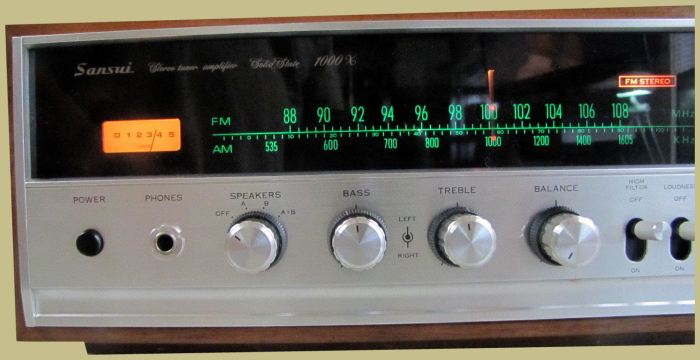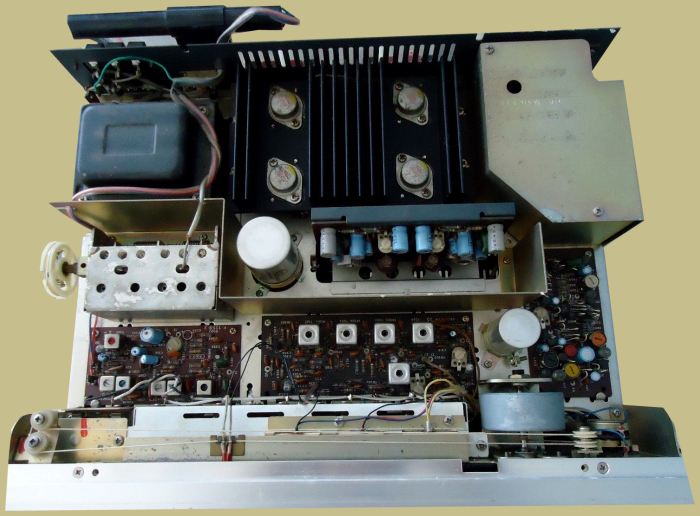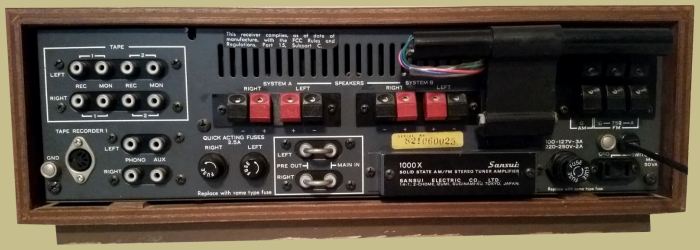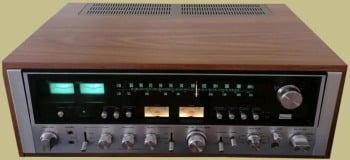
This great little entry level receiver is the Sansui 1000x. Introduced in 1970 it is a well built and great looking receiver. Here’s what Sansui had to say about it:
With an unprecedented 100 watts power, the latest FET components, functional front panel design and an ability to handle two speaker systems, the 1000X considerably advances the art of stereophonic reproduction.

It puts out 28 watts per channel into 8 ohms and 35 into 4 ohms. It has a great FM tuner overall excellent build quality and is very simple to operate.

Aesthetically it is a great looking receiver. It has a nice well built wood case, black dial face with green back lighting and nice front panel layout. The toggle switches are crisp and well sized. Another interesting feature is that the bass and treble can be controlled for each channel independently. The inner part of the control knob adjusts the left channel and the outer part the right.

The Sansui 1000x is totally capacitor coupled and uses all NPN transistors and a single rail power supply. A completely discrete amplifier and pre-amp circuits give the receiver a great sound stage. It weighs in at just under 23 pounds and measures 16.4 x 5.7 x 11.8 inches.

As I mentioned above the Sansui 1000x is a fantastic entry level receiver with plenty of power for most applications. Both its looks and its performance make it very popular.


Noticed in the 1000x cap rebuild that the large cap values are 3300uf, and 100v vice the original which are 2200uf and 60v. Seems a little difference between them. Whats with that
Although I am far from an expert, (I am a perpetual student of sound reproduction) it is my understanding, from being a huge vintage audio fan, that larger values for capacitors (essentially tiny batteries) help the voltage flow by not getting nearly as hot while decreasing transient artifacts and over all improving the clarity and the depth of the sound stage. Please, if anyone disagrees please explain the physics of why I am mistaken so we can all learn. I truly hope this helps.